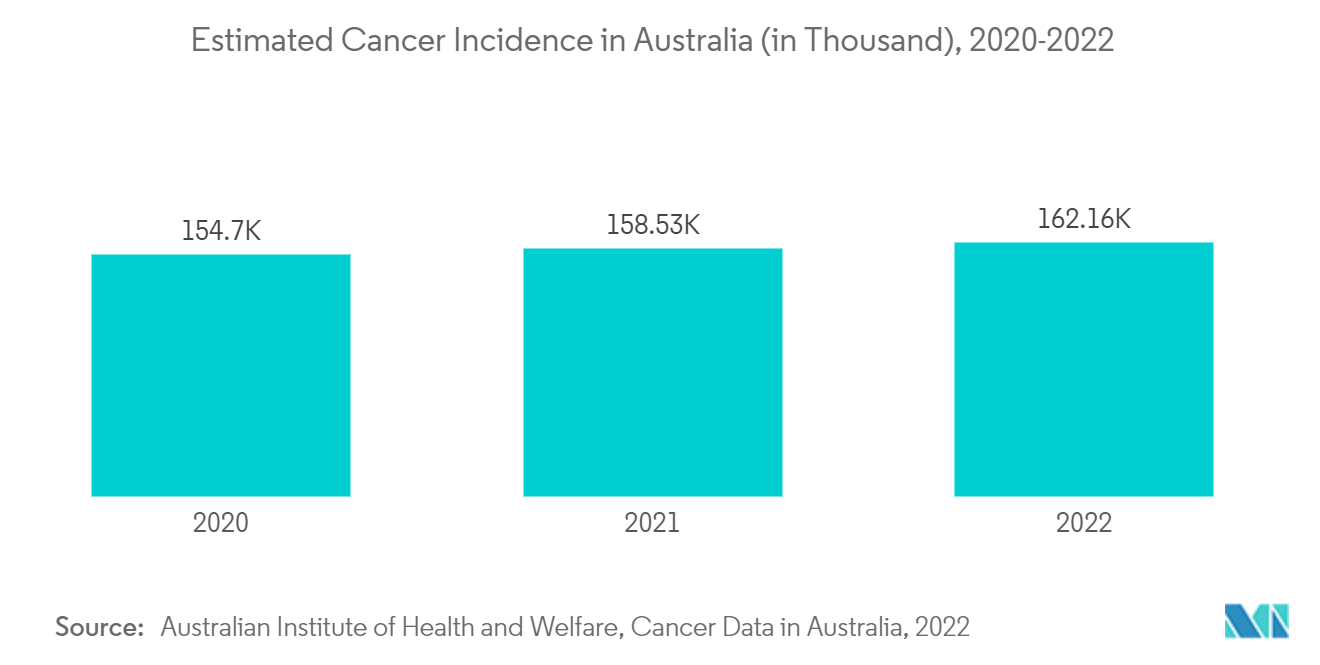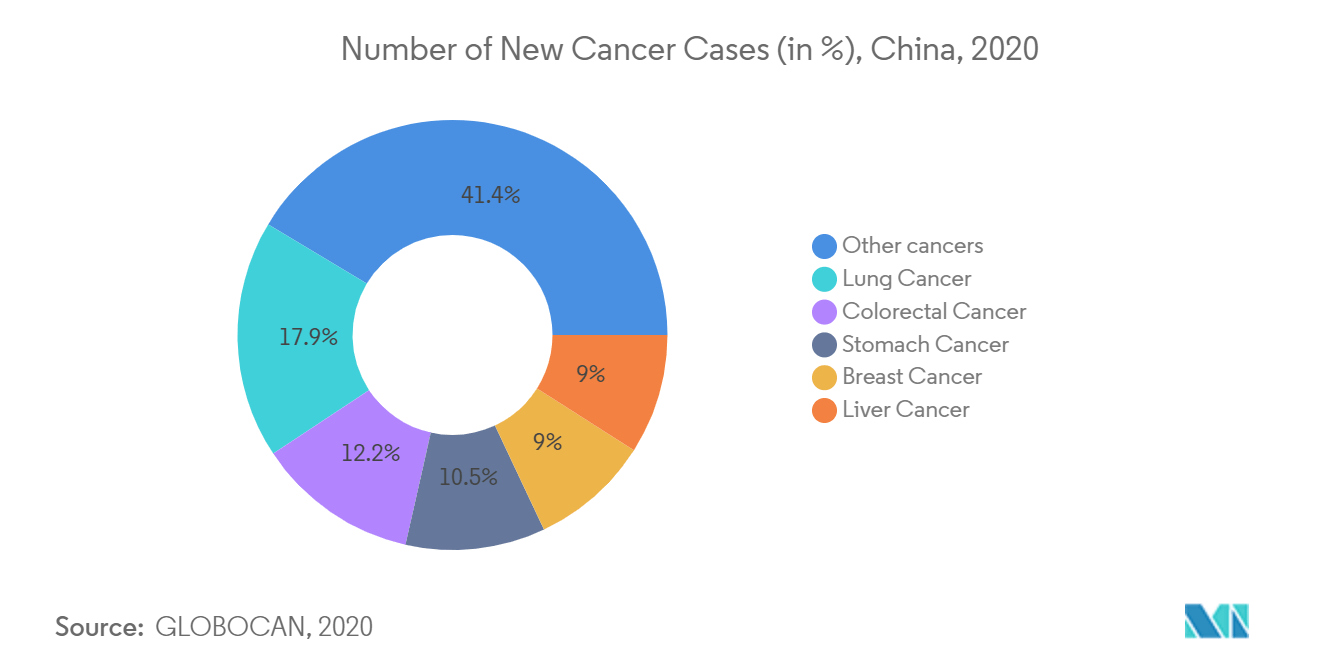Market Trends of Asia-Pacific Cancer Therapy Industry
This section covers the major market trends shaping the APAC Cancer Therapies Market according to our research experts:
Target Therapy is Expected to Show the Significant Growth Over the Forecast Period
Targeted therapy is a type of cancer treatment that targets the changes in cancer cells that help them grow, divide, and spread. The targeted therapy includes gene expression modulators, apoptosis inducers, angiogenesis inhibitors, signal transduction inhibitors, and toxin delivery molecules. The drugs for target therapy work by targeting the specific genes or proteins that are present in the cancer cells. Targeted therapy is attaining importance due to its specificity toward cancer cells while sparing toxicity to off-target cells.
The major factors driving the growth of the segment are an increase in R&D and the rising prevalence and incidence of various types of cancer across the globe. For instance, as per the 2022 updated report of Janssen, Asia Pacific hosts 50% of the world's new cancer cases each year, and deaths caused by cancer in Asia are expected to increase by 36% by 2030. Also, Asia Pacific has the highest incidence of liver and stomach cancers, and prostate cancer is one of the leading male cancers in some Asian countries. Hence, increasing cancer will increase the demand for treatment options for cancers which will increase the market growth.
Furthermore, the new developments and approvals of the drugs under targeted therapy segment helps the market to grow. For instance, in August 2022, AstraZeneca's Tagrisso (osimertinib) has been approved in Japan for the adjuvant treatment of patients with epidermal growth factor receptor-mutated (EGFRm) non-small cell lung cancer (NSCLC) after surgery.
Thus the above-mentioned factors are expected to drive the growth of the targeted therapy segment during the forecast period.

China is Expected to Dominate the Market Over the Forecast Period
The major factors fueling the market growth in China are the increasing burden of cancers, the growing focus on research and development of effective therapies for cancer, and the rising number of product approvals and launches along with increasing investment.
According to the report titled "Cancer statistics in China and United States, 2022: profiles, trends, and determinants" published in February 2022, compared to the 4,568,754 new cancer cases in China in 2020, the predicted number of new cancer cases for 2022 is 4,820,000. This increase in the new cases will directly increase the demand for cancer therapy, thus helping in the growth of the market during the study period. Also, as per the report titled "Changing profiles of cancer burden worldwide and in China: a secondary analysis of the global cancer statistics 2020" published in April 2021, China is expected to experience 6.85 million new cancer cases and 5.07 million deaths in 2040. Thus, the increase in the incidence of cancer cases in China will drive the market over the forecast period.
Furthermore, the new product approvals and launches for cancers will drive market growth. For instance, in June 2022, China National Medical Products Administration (NMPA) has approved BeiGene's anti-PD-1 antibody, tislelizumab, in combination with chemotherapy as a first-line treatment for patients with recurrent or metastatic nasopharyngeal cancer (NPC). Also, in July 2021, AstraZeneca's Imfinzi (durvalumab) has been approved in China for the 1st-line treatment of adult patients with extensive-stage small cell lung cancer (ES-SCLC), in combination with standard of care platinum chemotherapy (etoposide plus a choice of either carboplatin or cisplatin).
Thus, given the aforementioned factors, the cancer therapy market is expected to grow significantly over the forecast period in China.


